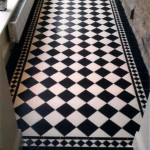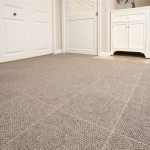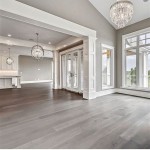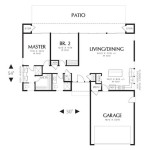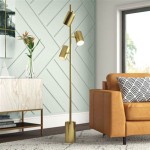Bathroom Floor Tile Ideas and Designs: A Comprehensive Guide
The bathroom, a space frequently visited and often overlooked, deserves careful attention when it comes to design. The flooring, in particular, serves as a critical foundation for the overall aesthetic and functionality of the room. Selecting appropriate bathroom floor tiles involves considering various factors, including durability, water resistance, safety, and, of course, visual appeal. This guide explores a variety of bathroom floor tile ideas and designs, providing information to assist in making informed decisions for bathroom renovations or new constructions.
Understanding Key Considerations for Bathroom Flooring
Before diving into specific tile types and designs, it's essential to understand the fundamental requirements of bathroom flooring. Bathrooms are inherently wet environments, making water resistance paramount. Poor water resistance can lead to moisture seeping beneath the tiles, causing mold and mildew growth, structural damage, and potentially hazardous health problems. Equally important is slip resistance. A slick surface can increase the risk of falls, particularly for children and the elderly. Durability is also a key factor, as bathroom floors are subjected to frequent foot traffic and the potential for dropped objects.
The Porcelain Enamel Institute (PEI) rating system measures the abrasion resistance of tiles. For bathroom floors, a PEI rating of 3 or higher is generally recommended, indicating moderate to heavy traffic suitability. Furthermore, understanding the coefficient of friction (COF) is crucial for slip resistance. A COF of 0.5 or higher is typically considered safe for level interior surfaces exposed to water.
Beyond technical specifications, consider the overall design scheme of the bathroom. Flooring should complement the wall tiles, fixtures, and accessories. The size of the bathroom also influences tile selection. Larger tiles can make small bathrooms appear more spacious, while smaller, intricate patterns can add visual interest to larger bathrooms.
Exploring Different Tile Materials and their Properties
Several tile materials are commonly used for bathroom floors, each with its own unique advantages and disadvantages.
Porcelain Tile: Porcelain is a dense, non-porous ceramic tile known for its exceptional water resistance and durability. It is fired at high temperatures, resulting in a strong and resilient material suitable for high-traffic areas. Porcelain tiles are available in a vast array of colors, patterns, and sizes, including options that mimic natural stone or wood. They are also relatively easy to maintain, requiring only regular cleaning with mild detergents. Porcelain is generally more expensive than other ceramic tiles, but its longevity and performance often justify the higher cost.
Ceramic Tile: Ceramic tile is another popular choice, offering a balance of affordability and functionality. While typically less dense than porcelain, ceramic tiles are still water-resistant and durable enough for bathroom floors. They are readily available in a wide range of styles, sizes, and price points. However, unglazed ceramic tiles can be more porous and require sealing to prevent water absorption and staining. Properly sealed ceramic tiles provide a durable and aesthetically pleasing flooring solution.
Natural Stone Tile: Natural stone tiles, such as granite, marble, slate, and travertine, offer a luxurious and elegant aesthetic. Each stone has unique veining and variations, adding character and a natural touch to the bathroom. Granite is particularly durable and resistant to scratches and stains. Marble offers a classic and sophisticated look, but it is more porous and requires careful sealing and maintenance to prevent etching from acidic substances. Slate is a naturally slip-resistant option with a rustic and earthy appeal. Travertine provides a warm and textured surface, but it also needs sealing to protect against moisture and staining. Natural stone tiles generally require more maintenance than porcelain or ceramic tiles and are typically more expensive.
Vinyl Tile: Vinyl tile is a cost-effective and versatile option, available in both sheet and individual tile formats. It is waterproof, easy to install, and relatively comfortable underfoot. Luxury vinyl tile (LVT) and luxury vinyl plank (LVP) are enhanced versions of vinyl flooring that offer realistic textures and patterns, mimicking wood, stone, or tile. Vinyl tiles are highly resistant to scratches, stains, and fading, making them a durable and low-maintenance choice for bathroom floors. The primary disadvantage of vinyl is its perceived lower quality compared to natural stone or porcelain.
Glass Tile: Glass tile adds a unique and contemporary touch to bathroom floors. It is non-porous and resistant to stains and moisture, making it suitable for wet environments. Glass tiles are available in a variety of colors, shapes, and sizes, allowing for creative and personalized designs. However, glass tiles can be slippery when wet, so it's important to choose textured or frosted glass tiles for bathroom floors to improve slip resistance. Glass can also be more fragile than other tile materials and may be prone to scratching or chipping under heavy use.
Cement Tile: Cement tile is handmade tile gaining popularity for its unique aesthetic and durability. These tiles are made from a mixture of cement, sand, and pigments, and are available in a vast range of colors and patterns. Cement tiles are known for their vibrant colors and intricate designs, often inspired by traditional Moroccan or Spanish motifs. They are porous and require sealing to protect against water damage and staining. Regular maintenance is essential to preserve their beauty and longevity.
Popular Bathroom Floor Tile Design Ideas
Beyond material choices, numerous design options exist for creating a visually appealing and functional bathroom floor.
Large Format Tiles: Large format tiles, typically measuring 12x24 inches or larger, are a popular choice for modern bathrooms. They create a seamless and spacious look by minimizing grout lines. Fewer grout lines also mean less maintenance and easier cleaning. Large format tiles are available in various materials, including porcelain, ceramic, and natural stone. When using large format tiles, ensure the subfloor is perfectly level to prevent cracking or uneven surfaces. A professional installation is recommended for optimal results.
Wood-Look Tiles: Wood-look tiles offer the warmth and beauty of hardwood flooring without the maintenance and water damage concerns associated with real wood in a bathroom. These tiles are typically made of porcelain or ceramic and are available in various wood species, colors, and plank sizes. They can be installed in traditional plank patterns or more creative layouts, such as herringbone or chevron. Wood-look tiles are a versatile option that complements a wide range of bathroom styles.
Geometric Patterns: Geometric patterns, such as hexagons, triangles, and squares, add visual interest and a contemporary flair to bathroom floors. These patterns can be created using tiles of different colors or materials, depending on the desired effect. Hexagon tiles are particularly popular, offering a unique and stylish alternative to traditional square tiles. Geometric patterns can be used to create a focal point in the bathroom or to define specific areas, such as the shower or vanity.
Mosaic Tiles: Mosaic tiles, typically composed of small squares or other shapes arranged on a mesh backing, offer endless design possibilities. They can be used to create intricate patterns, murals, or accent borders. Mosaic tiles are available in various materials, including glass, ceramic, porcelain, and natural stone. They are often used in shower floors to provide better slip resistance due to the increased grout lines. When using mosaic tiles, it's important to select grout colors that complement the tile design and to seal the grout to prevent staining.
Patterned Tiles: patterned tiles provide an easy way to add personality and visual interest to the floor. These tiles come in various styles, ranging from classic floral motifs to bold geometric designs. Patterned tiles can be used to create a vintage-inspired look, a modern statement, or a playful and whimsical atmosphere. When using patterned tiles, it's important to balance the design with neutral wall colors and fixtures to avoid overwhelming the space.
Textured Tiles: Textured tiles add depth and dimension to bathroom floors, creating a tactile and visually appealing surface. They can mimic the look of natural stone, wood, or fabric. Textured tiles also provide enhanced slip resistance, making them a practical choice for bathrooms. They are available in various materials, including porcelain, ceramic, and natural stone. When selecting textured tiles, consider the ease of cleaning, as some textures may trap dirt and debris.
Color Considerations: The color of the bathroom floor tiles significantly impacts the overall ambiance of the space. Light-colored tiles, such as white, cream, and light gray, can make a small bathroom appear larger and brighter. Dark-colored tiles, such as black, dark gray, and navy blue, create a more dramatic and intimate atmosphere. Neutral colors, such as beige, brown, and gray, are versatile and can be paired with various wall colors and fixtures. Consider the existing color scheme of the bathroom when selecting floor tiles to ensure a cohesive and harmonious design.
Grout Selection: While often overlooked, grout plays a crucial role in the overall appearance and functionality of the bathroom floor. Grout fills the spaces between the tiles, preventing water from seeping underneath and providing structural stability. The color of the grout can significantly impact the overall look of the floor. Matching the grout color to the tile color creates a seamless and uniform appearance, while contrasting grout colors highlight the individual tiles and create a more defined look. Epoxy grout is a durable and water-resistant option that is ideal for bathrooms, as it is less prone to staining and cracking than traditional cement-based grout. Regular sealing of the grout is essential to prevent water absorption and staining.

40 Free Shower Tile Ideas Tips For Choosing Why

Latest Bathroom Floor Tiles Designs

Bathroom Flooring Ideas You Ll Love This Year Country Floors Of America Llc

5 Bathroom Flooring Ideas And Design Styles Esb

How To Design A Gray Tile Bathroom Marazzi Usa
Get Inspired With 15 Shower Design Ideas Floor Decor Blog

8 Bathroom Tile Ideas Utilizing Tiles In Different Ways Seapointe

Unique Bathroom Floor Tile Ideas Arizona

Bathroom Floor Tiles Hexagon More The Tile Shop

70 Gorgeous Bathroom Tile Ideas For 2025
